
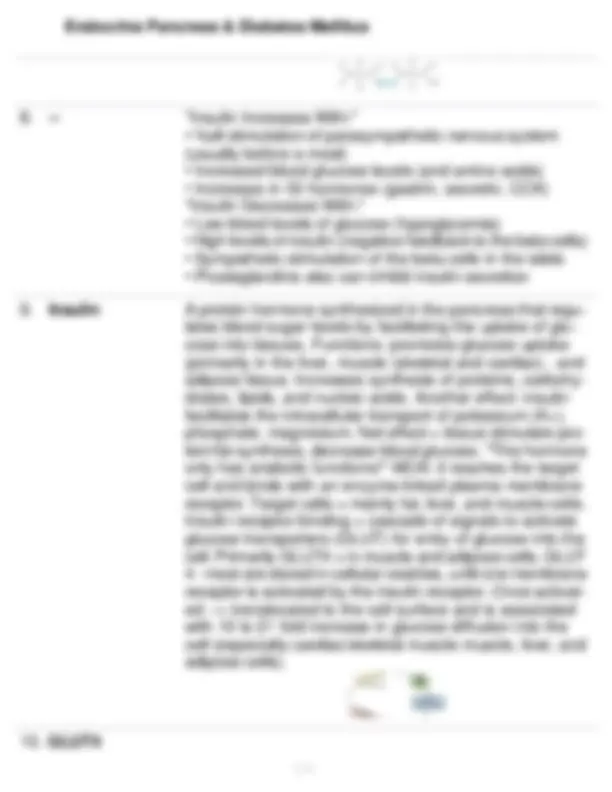
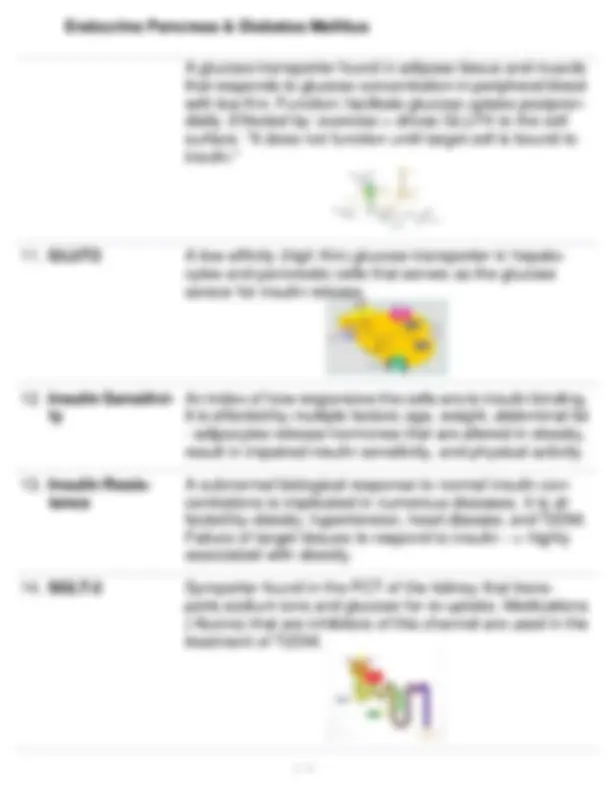
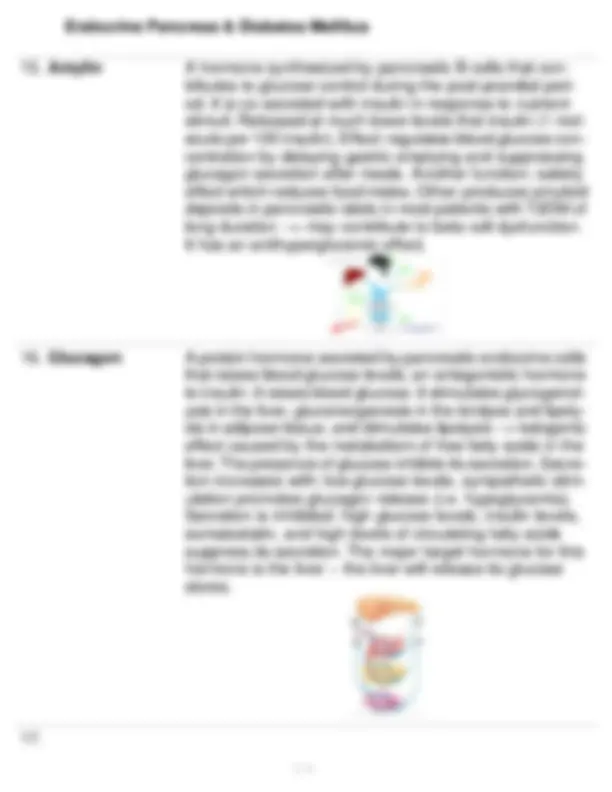
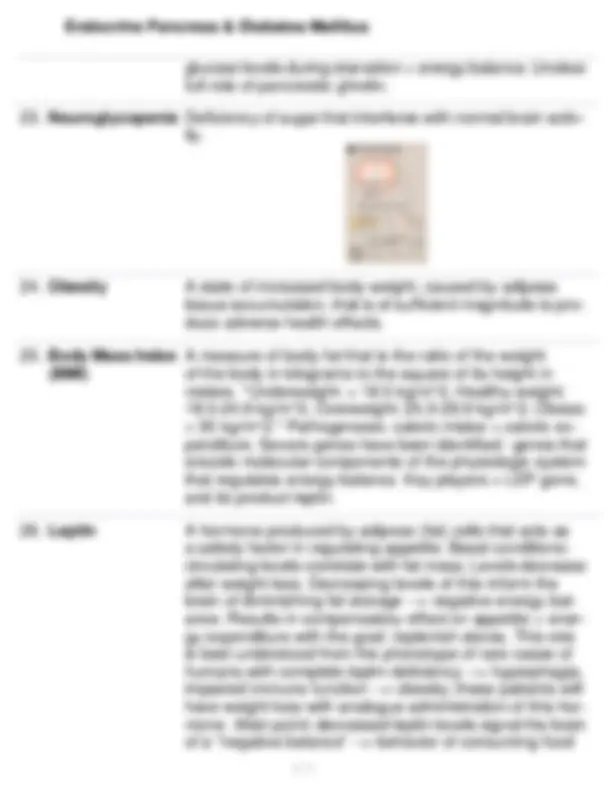
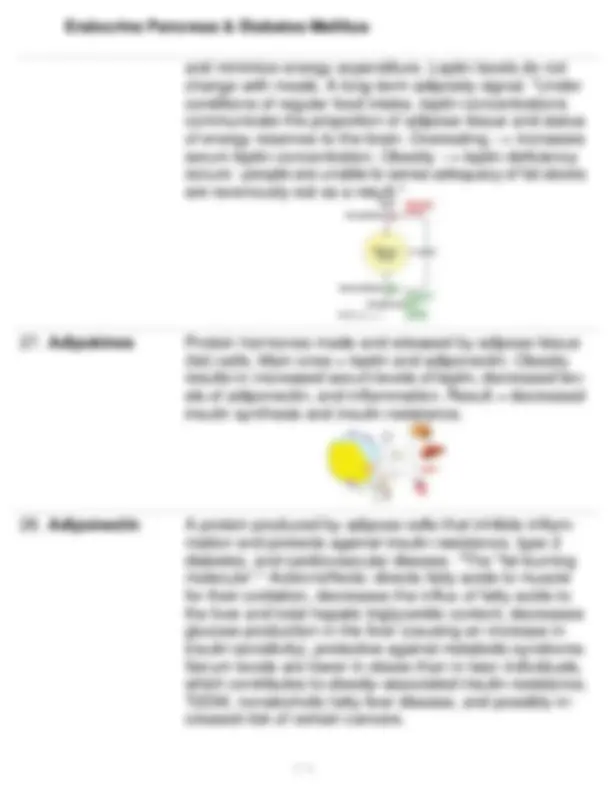
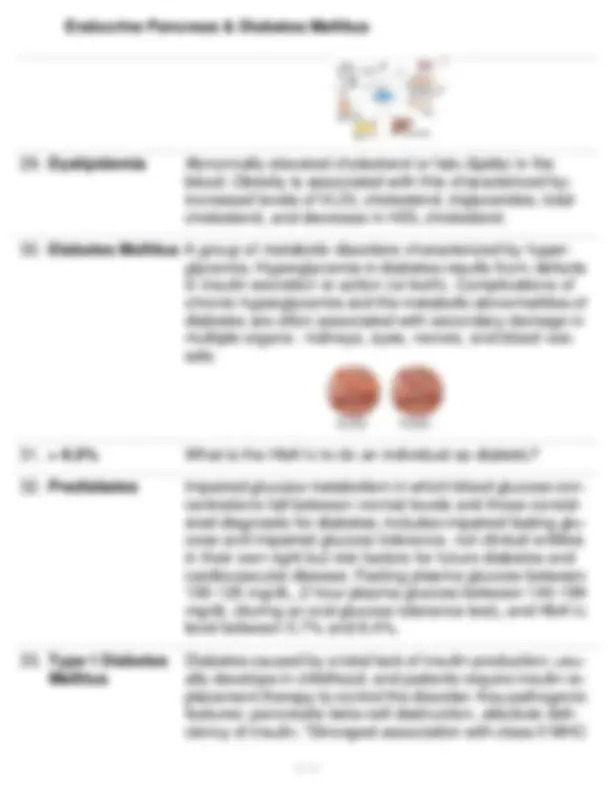
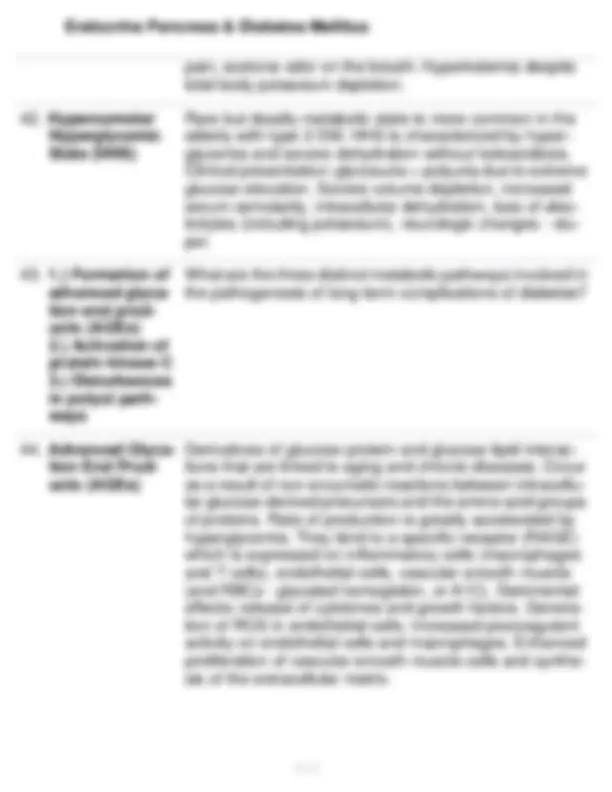
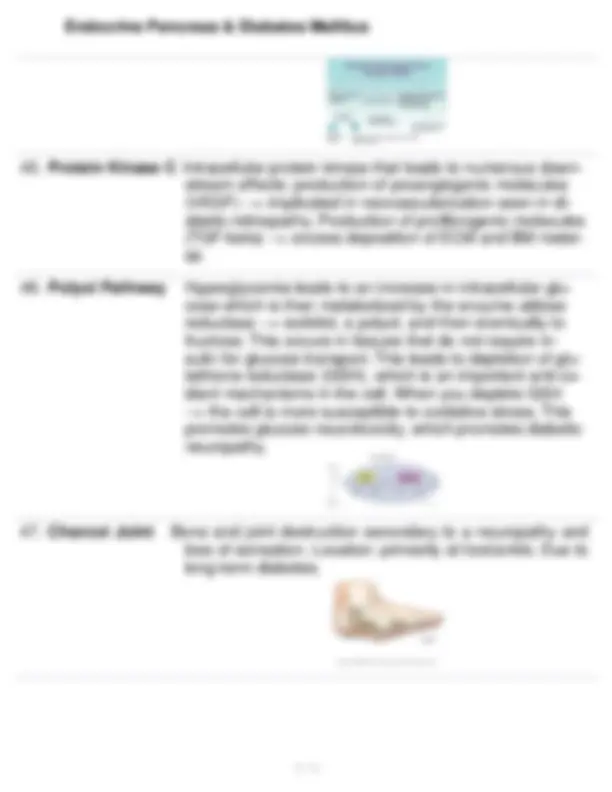


Study with the several resources on Docsity

Earn points by helping other students or get them with a premium plan


Prepare for your exams
Study with the several resources on Docsity

Earn points to download
Earn points by helping other students or get them with a premium plan
Community
Ask the community for help and clear up your study doubts
Discover the best universities in your country according to Docsity users
Free resources
Download our free guides on studying techniques, anxiety management strategies, and thesis advice from Docsity tutors
An in-depth exploration of the endocrine role of the pancreas, focusing on the functions of insulin and glucagon, their secretion, and the regulation of blood glucose levels. Topics include the differences between type 1 and type 2 diabetes mellitus, the role of incretins, and the impact of free fatty acids on insulin sensitivity.
Typology: Exams
1 / 14

This page cannot be seen from the preview
Don't miss anything!









A glucose transporter found in adipose tissue and muscle that responds to glucose concentration in peripheral blood with low Km. Function: facilitate glucose uptake postpran- dially. Effected by: exercise = drives GLUT4 to the cell surface. It does not function until target cell is bound to insulin.
Amylin A hormone synthesized by pancreatic B cells that con- tributes to glucose control during the post-prandial peri- od. It is co-secreted with insulin in response to nutrient stimuli. Released at much lower levels that insulin (1 mol- ecule per 100 insulin). Effect: regulates blood glucose con- centration by delaying gastric emptying and suppressing glucagon secretion after meals. Another function: satiety effect which reduces food intake. Other: produces amyloid deposits in pancreatic islets in most patients with T2DM of long duration --> may contribute to beta cell dysfunction. It has an antihyperglycemic effect.
Glucagon A protein hormone secreted by pancreatic endocrine cells that raises blood glucose levels; an antagonistic hormone to insulin. It raises blood glucose. It stimulates glycogenol- ysis in the liver, gluconeogenesis in the kindyes and lipoly- sis in adipose tissue, and stimulates lipolysis --> ketogenic effect caused by the metabolism of free fatty acids in the liver. The presence of glucose inhibits its secretion. Secre- tion increases with: low glucose levels, sympathetic stim- ulation promotes glucagon release (i.e. hypoglycemia). Secretion is inhibited: high glucose levels, insulin levels, somatostatin, and high levels of circulating fatty acids suppress its secretion. The major target hormone for this hormone is the liver -- the liver will release its glucose stores.
GLP- 1 Glucagon-like peptide 1. Produced in the small intestine after a meal. Binds to its receptors in target tissues, lo- cated in: pancreatic beta cells, gastric mucosa, kidney, lung, heart, skin, and immune cells. Main effect: stimu- lates glucose-dependent insulin release from pancreatic islets. Functions: slows gastric emptying (early satiety?), promoting hepatic glucose secretion, acts on the brain and inhibits appetite + induces weight loss, inhibits glucagon secretion, protects beta cells from destruction and stim- ulates beta cell growth. It is broken down by DPP-4. Its medications (-glutides), used in the tx of T2DM, promote weight loss and improves insulin response to GLP-1.
DPP- 4 Enzyme that inactivates and breaks down incretins. Both GIP and GLP-1 are important in reducing serum glucose levels. Medications (-gliptins) - which are inhibitors of this
Ghrelin A hormone whose name is derived from growth hor- mone-releasing peptide. Ability to bind + activate GH sec- retagogue + stimulate GH-releasing peptide. Produced by endocrine cells in the gastric mucosa (in fundus) + μcells in the islets. Action: stimulates GH secretion directly in the pituitary, induces gastric emptying + acid secretion, regulates appetite + energy balance (via neurons in the hypothalamus). May play an essential role in maintaining
glucose levels during starvation + energy balance. Unclear full role of pancreatic ghrelin.
30 kg/m^2.* Pathogenesis: caloric intake > caloric ex- penditure. Severe genes have been identified - genes that encode molecular components of the physiologic system that regulates energy balance. Key players = LEP gene, and its product leptin.
(HLA-DR3/DR4) genes.* Antibodies against beta cell anti- gens (including insulin and beta cell enzyme glutamic acid decarboxylase). Clinical presentation: polydipsia, polyuria, polyphagia, weight loss, and fatigue. Severe cases can lead to ketoacidosis.
Type 2 Diabetes Diabetes in which either the body produces insufficient Mellitus insulin or insulin resistance (a defective use of the insulin that is produced) occurs; the patient usually is not depen- dent on insulin for survival. Most common is adult onset, but prevalence is increasing in children and adolescents. Accounts for about 90 - 95% of all cases. Key pathogenic features: peripheral insulin resistance, inadequate secre- tory response by the pancreatic beta cells. Clinical presen- tation: polyuria, polydipsia, fatigue, recurring infections, visual changes, neuropathy. Secondary risk factors: CAD, peripheral artery disease, cerebrovascular disease.
Excess Free Fat- Inverse correlation between fasting FFAs and insulin sen- ty Acids sitivity. Increase in FFAs --> decrease in insulin sensitivity. Decrease in FFAs --> increase in insulin sensitivity.
Inflammation A localized physical condition in which part of the body becomes reddened, swollen, hot, and often painful, es- pecially as a reaction to injury or infection. In diabetes, it has emerged as an important contributor to pathogen- esis of T2DM. Adipose tissue contains adipocytes + in- flammatory/immune cells (macrophages + lymphocytes
Hyperosmolar Hyperglycemic State (HHS)
1.) Formation of advanced glyca- tion end prod- ucts (AGEs) 2.) Activation of protein kinase C 3.) Disturbances in polyol path- ways
Advanced Glyca- tion End Prod- ucts (AGEs) pain, acetone odor on the breath. Hyperkalemia despite total body potassium depletion. Rare but deadly metabolic state is more common in the elderly with type 2 DM. HHS is characterized by hyper- glycemia and severe dehydration without ketoacidosis. Clinical presentation: glycosuria + polyuria due to extreme glucose elevation. Severe volume depletion, increased serum osmolarity, intracellular dehydration, loss of elec- trolytes (including potassium), neurologic changes - stu- por. What are the three distinct metabolic pathways involved in the pathogenesis of long-term complications of diabetes? Derivatives of glucose-protein and glucose-lipid interac- tions that are linked to aging and chronic diseases. Occur as a result of non-enzymatic reactions between intracellu- lar glucose-derived precursors and the amino acid groups of proteins. Rate of production is greatly accelerated by hyperglycemia. They bind to a specific receptor (RAGE) which is expressed on inflammatory cells (macrophages and T cells), endothelial cells, vascular smooth muscle (and RBCs - glycated hemoglobin, or A1C). Detrimental effects: release of cytokines and growth factors. Genera- tion of ROS in endothelial cells. Increased procoagulant activity on endothelial cells and macrophages. Enhanced proliferation of vascular smooth muscle cells and synthe- sis of the extracellular matrix.